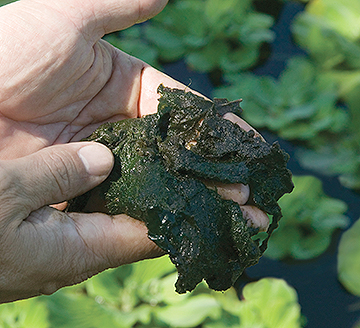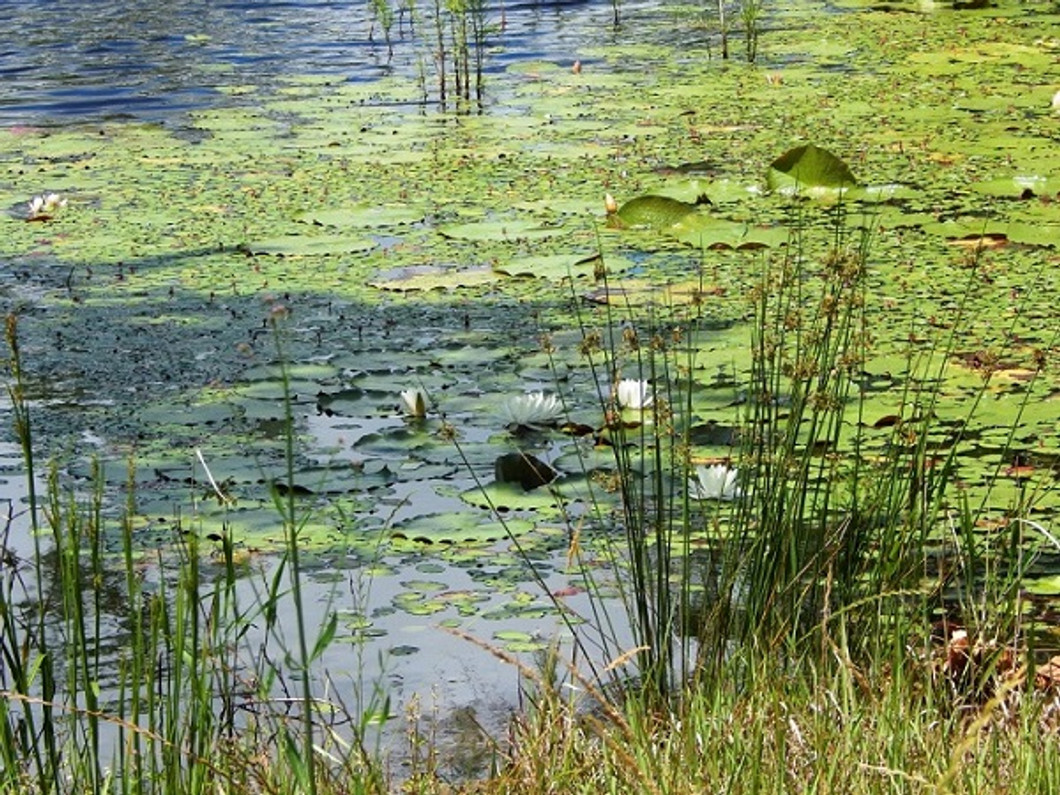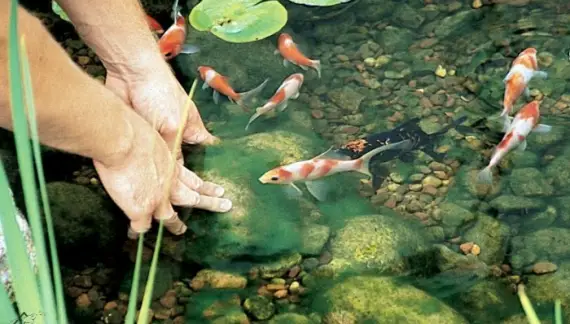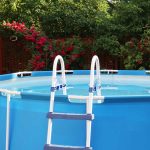Algae are a common nuisance in ponds, often turning the water green and affecting the overall health of aquatic life. If left unchecked, algae can quickly take over a pond, disrupting its ecosystem. Fortunately, there are several methods to control and prevent algae growth in ponds. In this article, we will explore some effective strategies to keep your pond clear and healthy.

Credit: www.tetra-fish.com
1. Maintain Proper Circulation
One of the key factors contributing to algae growth in ponds is stagnant water. To combat this, ensure that your pond has proper circulation. Installing a fountain, waterfall, or aerator can help keep the water moving, preventing algae from settling and thriving. The movement of water also helps to oxygenate the pond, creating a healthier environment for fish and other aquatic organisms.
2. Balance Nutrient Levels
Algae thrive on nutrients like phosphorus and nitrogen, which are commonly found in fish waste, decaying organic matter, and fertilizers. To control algae growth, it is essential to balance the nutrient levels in your pond. Regularly remove debris, such as leaves and twigs, to prevent excess nutrients from accumulating. Consider using a phosphate binder to help reduce phosphorus levels and inhibit algae growth.
3. Introduce Aquatic Plants
Aquatic plants not only enhance the aesthetic appeal of a pond but also play a crucial role in controlling algae. Plants like water lilies, duckweed, and water hyacinth compete with algae for nutrients, limiting their growth. Additionally, plants provide shade and shelter for fish, reducing stress and creating a more balanced ecosystem. Be sure to choose native plants that are well-suited to your pond’s conditions.

Credit: weedersdigest.com
4. Use Beneficial Bacteria
Beneficial bacteria products are an environmentally friendly way to control algae in ponds. These bacteria help break down organic matter, reducing nutrient levels and inhibiting algae growth. Adding beneficial bacteria to your pond on a regular basis can promote water clarity and improve overall water quality. Look for products specifically designed for pond use for optimal results.
5. Limit Sunlight Exposure
Algae require sunlight to photosynthesize and grow. By limiting sunlight exposure to your pond, you can effectively control algae growth. Planting trees or installing shading devices around the pond can help reduce the amount of sunlight reaching the water’s surface. This simple step can significantly impact algae proliferation and improve water quality.
6. Regular Maintenance
Consistent maintenance is key to preventing algae outbreaks in ponds. Regularly inspect your pond for signs of algae growth and take prompt action if necessary. Remove excess algae manually using a net or rake to prevent it from spreading further. Conduct routine water tests to monitor nutrient levels and adjust as needed to maintain a healthy balance in the pond.
7. Consider UV Clarifiers
UV clarifiers are effective tools for controlling algae in ponds by utilizing ultraviolet light to disrupt algae cells’ reproductive cycle. These devices are designed to kill algae and prevent their growth, resulting in clearer water and a healthier pond environment. UV clarifiers are easy to install and can be a valuable addition to your pond maintenance routine.
8. Avoid Overfeeding Fish
Overfeeding fish can lead to excess fish waste, which contributes to nutrient buildup in the pond. To prevent algae growth, feed your fish sparingly and remove any uneaten food promptly. By maintaining a proper feeding schedule and quantity, you can help minimize nutrient levels in the water and reduce the risk of algae blooms.
9. Implement Barley Straw Treatment
Barley straw is a natural and chemical-free method to control algae in ponds. When barley straw decomposes in water, it releases compounds that inhibit algae growth. Place barley straw bales or pellets in your pond to take advantage of this eco-friendly solution. Barley straw treatment is safe for fish and plants, making it a popular choice among pond owners.
10. Monitor Water Temperature
Algae tend to proliferate in warm water conditions. By monitoring and controlling water temperature in your pond, you can help prevent algae outbreaks. Consider shading the pond during hot summer months to lower water temperature and discourage algae growth. Maintaining optimal water temperature is essential for promoting a healthy pond ecosystem.
Conclusion
Controlling algae growth in ponds requires a proactive approach and a combination of strategies to maintain water quality and ecosystem balance. By implementing proper circulation, nutrient management, aquatic plants, beneficial bacteria, and other effective methods, you can prevent algae blooms and keep your pond clear and healthy. Regular maintenance and monitoring are essential to address algae growth promptly and maintain a thriving pond environment.
Remember that each pond is unique, so it may take some experimentation to find the most effective algae control methods for your specific situation. By staying proactive and attentive to your pond’s needs, you can enjoy a beautiful and algae-free aquatic environment for years to come.





